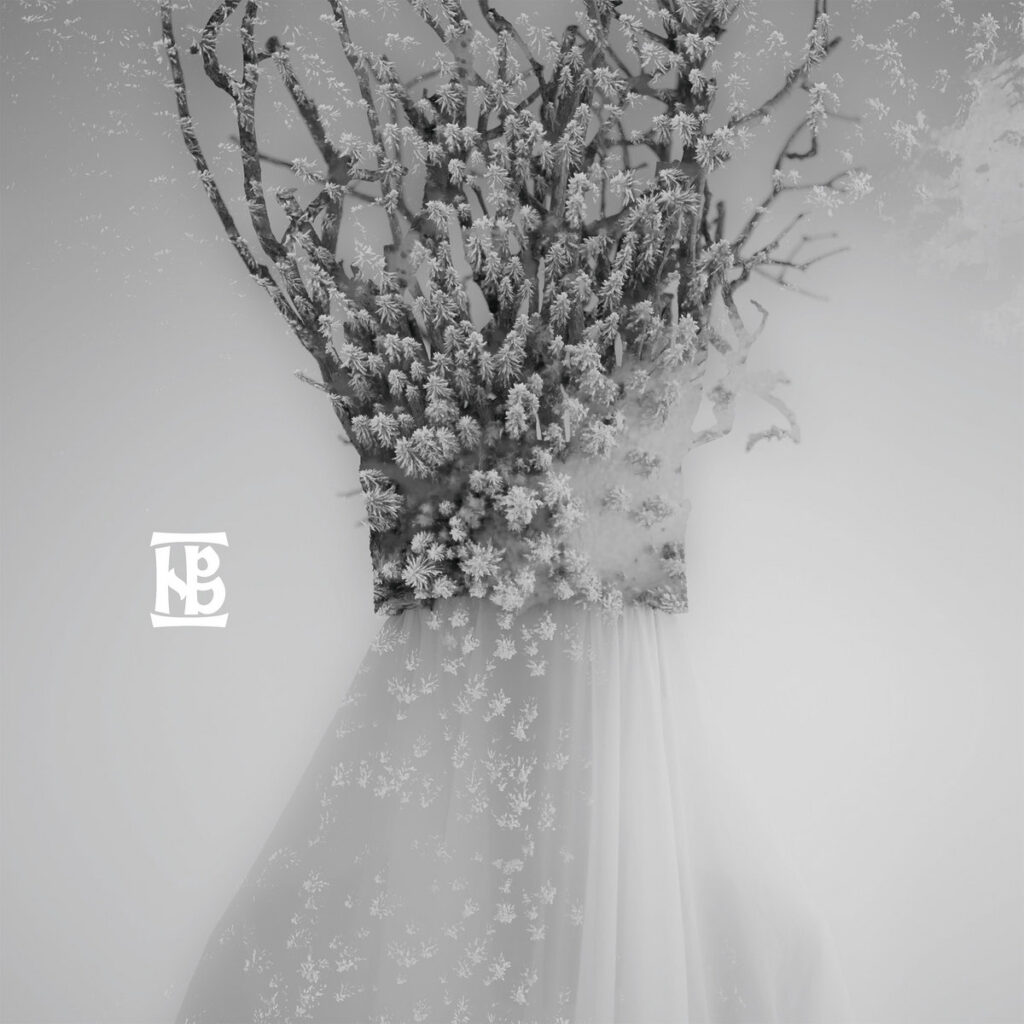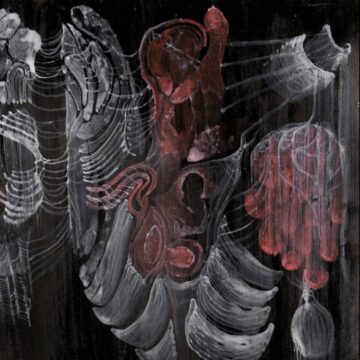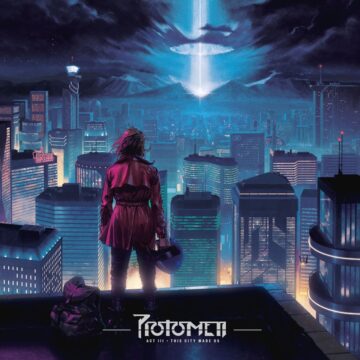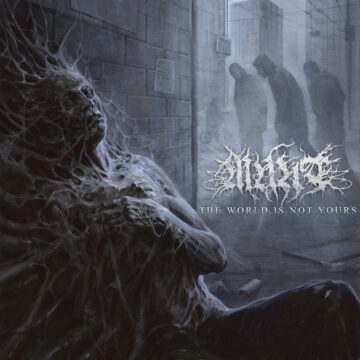Review: Negură Bunget – Zău

Style: Atmospheric/Folk Black Metal (mixed vocals)
Recommended for fans of: Behemoth, Bathory, Agalloch
Country: Romania
Release date: 26 November 2021
There’s something primal about winter. The growing nights and fall in temperature must trigger some long-dormant instinct in the mammalian brains leaving us longing for warmth, firesides and the safety of numbers. We bar our doors against the dark and cold and gather together, banishing all thought of shadows that move in the night. As a genre, atmospheric and folk black metal seems almost tailor-made to tap into this part of our collective psyches. It speaks to the part of us that live and die by nature’s whims and harkens to the longest and forgotten parts of our history where shamans and the wise communed with spirits living in the primordial wildernesses. It seems like a psychological itch many of us want to scratch: Anecdotally, there certainly seems to be a rise in popularity of folk metal bands that embrace elements of pagan spirituality into their aesthetic, sound or ideology. So, as the winter solstice approaches (for those of us in the northern hemisphere), why not spin up an album that addresses the spiritual aspects of nature in all its brutal splendour?
Zău is the eighth (and possibly final) album by Negură Bunget. It is the finale in the band’s “Transylvanian Trilogy”, a labour of love by a grieving band, and a swansong from a central figure in the metal community. The album almost never saw the light of day when Gabriel “Negru” Mafa suffered a fatal heart attack in 2017. Negru was the only remaining original member of the band and the creative driving force behind their ever-evolving sound. It was Negru who expanded the band’s line up and opened up the band to using traditional instruments in order to breathe life into his opus: The “Transylvanian Trilogy” of albums. Miraculously, Negru’s drum tracks for the final part of the trilogy, Zău, had already been laid down before his death. Rather than letting the tryptic remain incomplete, the remaining members of the band painstakingly gathered all the tracks and built them into a final album to complete the Transylvanian Trilogy and create a tribute to Negru.
The band’s sense of loss is apparent even in the album art designed by Daniel Dorobanţu. It depicts a snowy forest surrounded by white; the negative space shaping the forest into the spectral silhouette of a figure’s head and shoulders, wearing a crown of sticks and branches. The image is almost the opposite of the album cover of Negură Bunget’s previous album, Zi, which features a man in profile wearing a crown of sticks, but against a black background. With this in mind, the image speaks of absence in its negative space while paying tribute to the Romanian wilderness that is central to the band’s ideology.
The opening track “Brad” (a 15-minute epic and possible nod to Negru’s side project Din Brad), opens with Petrică Ionuţescu playing a scattered and haunting piece on the nai, overlayed with ghostly whispers before giving way to a slow, clean guitars, and atmospheric synth laying down the foundation of a soundscape. Gorgeous, clean vocals lilt over the soundscape as a herald of the heavy guitar riffs and darker vocals to come. Counterbalancing the lengthy, atmospheric tone-poems are some more metal-oriented tracks that hark back to vintage Negură Bunget. “Obrăzar” gives us a huge riff that you can stick your teeth into layered with a fanfare of synth that give the track an almost Behemoth-esque quality. And “Tinerețe Fără Bătrânețe” has one of the best slow doom-laden riffs that I’ve heard on an album this year.
The final track, “Toacă Din Cer” is one of the most interesting and affecting; Opening with a short instrumental by Negru and then launching into a triumphant blaze of metal. All the elements that made the Transylvanian Trilogy special layer one upon the other. Of all the songs on the album, this one feels like a celebration of life. Until, ultimately, the track draws to a close. Petrică Ionuţescu plays Negură Bunget out with a horn solo faintly reminiscent of “The Last Stand”.
Zău works as a beautiful album in itself, but it’s worth considering it as part of a trilogy as well as in isolation. Zău manages to tread the tightrope of being a clear part of a trilogy both thematically and musically as well as having its own identity as an album. The first album of the trilogy, Tau, uses folk elements to directly contrast with the band’s black metal sound, creating a jarring, dissonant voyage of an album. The second album, Zi (the most experimental in the trilogy), builds on Tau and adds softer elements of undistorted guitar and clean vocals into the mix. Zău contrasts with Tau directly by making more of an effort to blend, layer and find harmony between the folk and metal tones. It also incorporates some of the elements from Zi and works to integrate it. Leaving us with a richly varied album that ushers us through beautiful ambient soundscapes, to howling death metal, to calm lacunae of folk instrumentation.
Though Zău is largely successful in building layer upon layer of tone to create an atmospheric ambiance, there are some moments where the mix becomes too crowded. The end of “Brad” makes the unfortunate shift from layered soundscape to cacophony and the gestalt value of the layered instruments is lost. The vocals often sound quite low in the mix, though this may be a convention of the genre. These nit-picking criticisms are, perhaps, forgivable when one remembers the context of the album and the fact that the drum tracks at least are cobbled together from Negru’s recordings and demos.
With the context of the album in mind, the bleak melancholy in many of the tracks on Zău are all the more poignant, the primal spiritual elements all the more potent. This doesn’t feel like just an album; it’s a paganistic funeral rite recorded to album. Researching the origin of this work gives more and more opportunities to appreciate the beauty and thought that went into crafting it. Understanding the short percussion pieces at the end of Tinerețe Fără Bătrânețe and the start of Toacă Din Cer which are played in were recorded by Negru – who would never live to hear the album complete gives significant pause for thought. They are almost moments of meditation mid-album listening to Negru play in isolation; echoing beautifully before fading into silence.
Negură Bunget’s Zău is many things: a beautiful album, a completion of a trilogy, swansong and tribute. I’m hard pressed to think of a more atmospheric, beautiful and emotional album to tap into that part of the subconscious mind that makes us bar our doors against the dark outside and wonder, just slightly, about the shadows moving out there in the wilderness.
RIP, Negru.
Recommended tracks: The whole thing. Though, favourites were Tinerețe Fără Bătrânețe and Toacă Din Cer
You may also like: Dordeduh, Phendrana, Windfaerer
Final verdict: 9/10
Related links: Bandcamp | Spotify | Facebook | Instagram | Twitter | Metal-Archives page
Label: Lupus Lounge – Website | Facebook
Negură Bunget was:
– Gabriel “Negru” Mafa (drums, percussion, dulcimer, horns, xylophone)
– Tibor Kati (vocals, guitar, keyboards, programming)
– Adrian “OQ” Neagoe (guitar, vocals, keyboards)
– Petrică Ionuţescu (nai, flute, horns)
– Ovidiu Corodan (bass)



1 Comment
Review: Vauruvã - Mar de Deriva - The Progressive Subway · June 6, 2025 at 02:08
[…] tracks: Os Caçadores, As Selvas Vermelhas No Planeta dos EminentesYou may also like: Bríi, Negura Bunget, Vestígio, SalqiuFinal verdict: […]